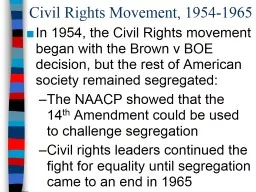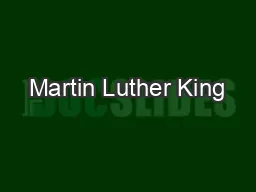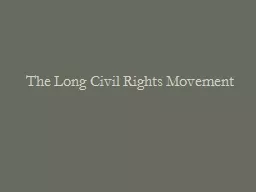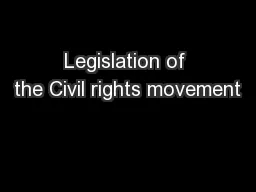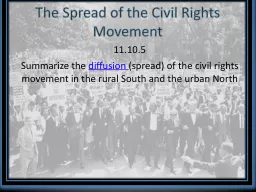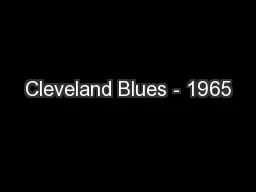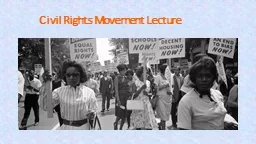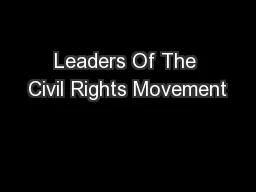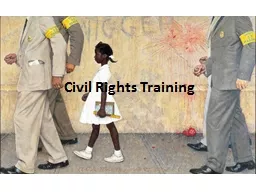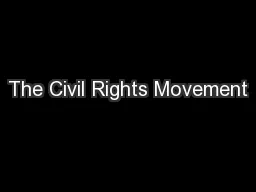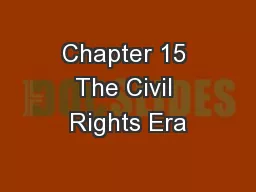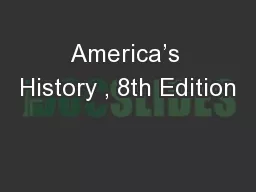PPT-Civil Rights Movement, 1954-1965
Author : phoebe-click | Published Date : 2017-08-20
In 1954 the Civil Rights movement began with the Brown v BOE decision but the rest of American society remained segregated The NAACP showed that the 14 th Amendment
Presentation Embed Code
Download Presentation
Download Presentation The PPT/PDF document "Civil Rights Movement, 1954-1965" is the property of its rightful owner. Permission is granted to download and print the materials on this website for personal, non-commercial use only, and to display it on your personal computer provided you do not modify the materials and that you retain all copyright notices contained in the materials. By downloading content from our website, you accept the terms of this agreement.
Civil Rights Movement, 1954-1965: Transcript
Download Rules Of Document
"Civil Rights Movement, 1954-1965"The content belongs to its owner. You may download and print it for personal use, without modification, and keep all copyright notices. By downloading, you agree to these terms.
Related Documents

